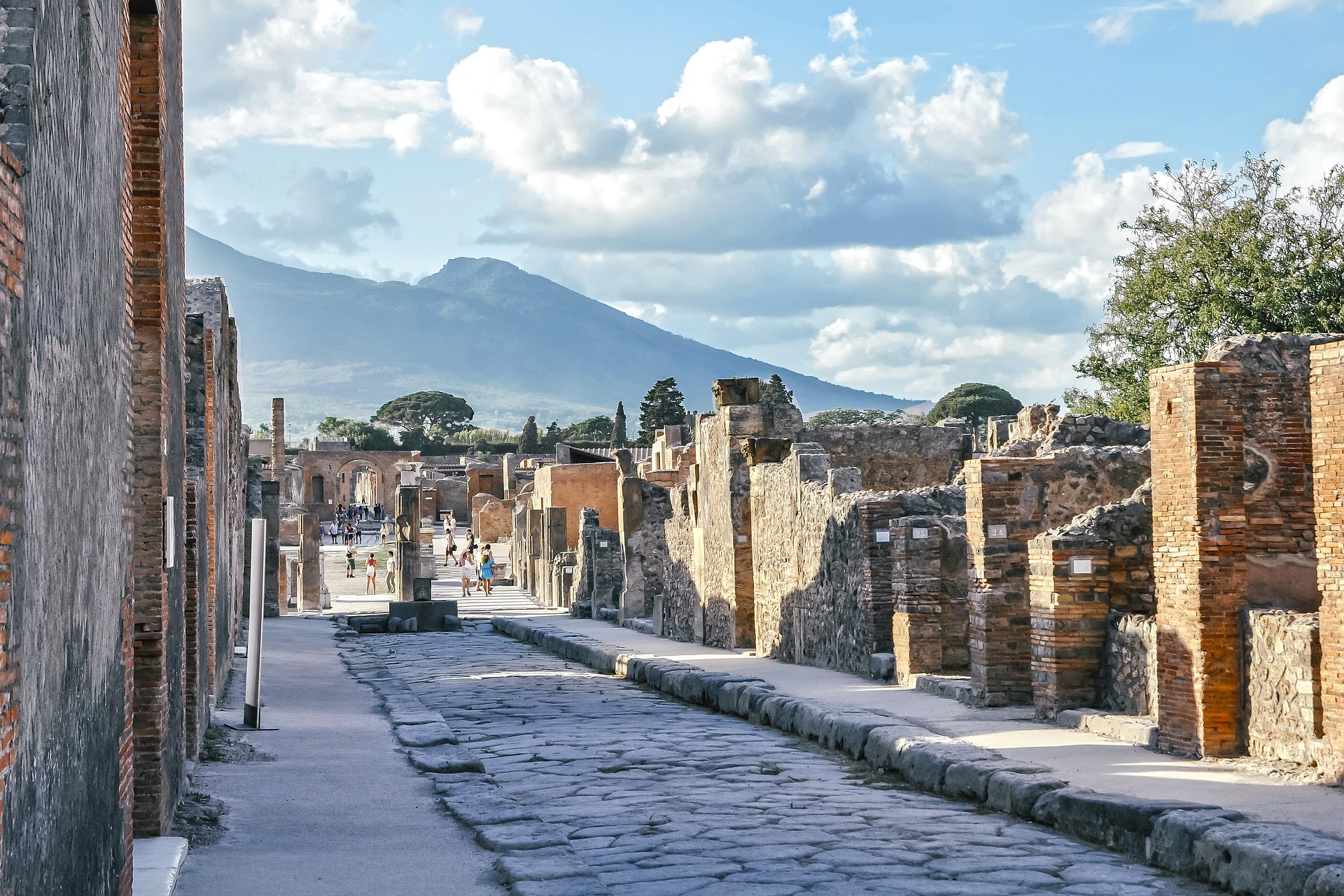
Pompeii is one of the most famous archaeological sites in the world, where visitors can walk through ancient Roman streets and discover a city frozen in time.
Pompeii, the legendary Roman city buried by the eruption of Mount Vesuvius, offers a unique journey back in time with its streets, temples, and houses in astonishingly well-preserved condition.

Pompeii is one of the most famous archaeological sites in the world, where visitors can walk through ancient Roman streets and discover a city frozen in time.
The Pompeii Forum was the heart of public life in the ancient Roman city. This vast open space, surrounded by majestic temples, columns, and administrative buildings, was the meeting point for the citizens of Pompeii, where political, religious, and commercial activities took place. Visitors can walk through this impressive area, where the bases of the original columns, the sacrificial altar, and the Temple of Jupiter, the main Roman god, are still preserved. The Forum was not only the center of public activity but also a symbol of Roman power in the city.
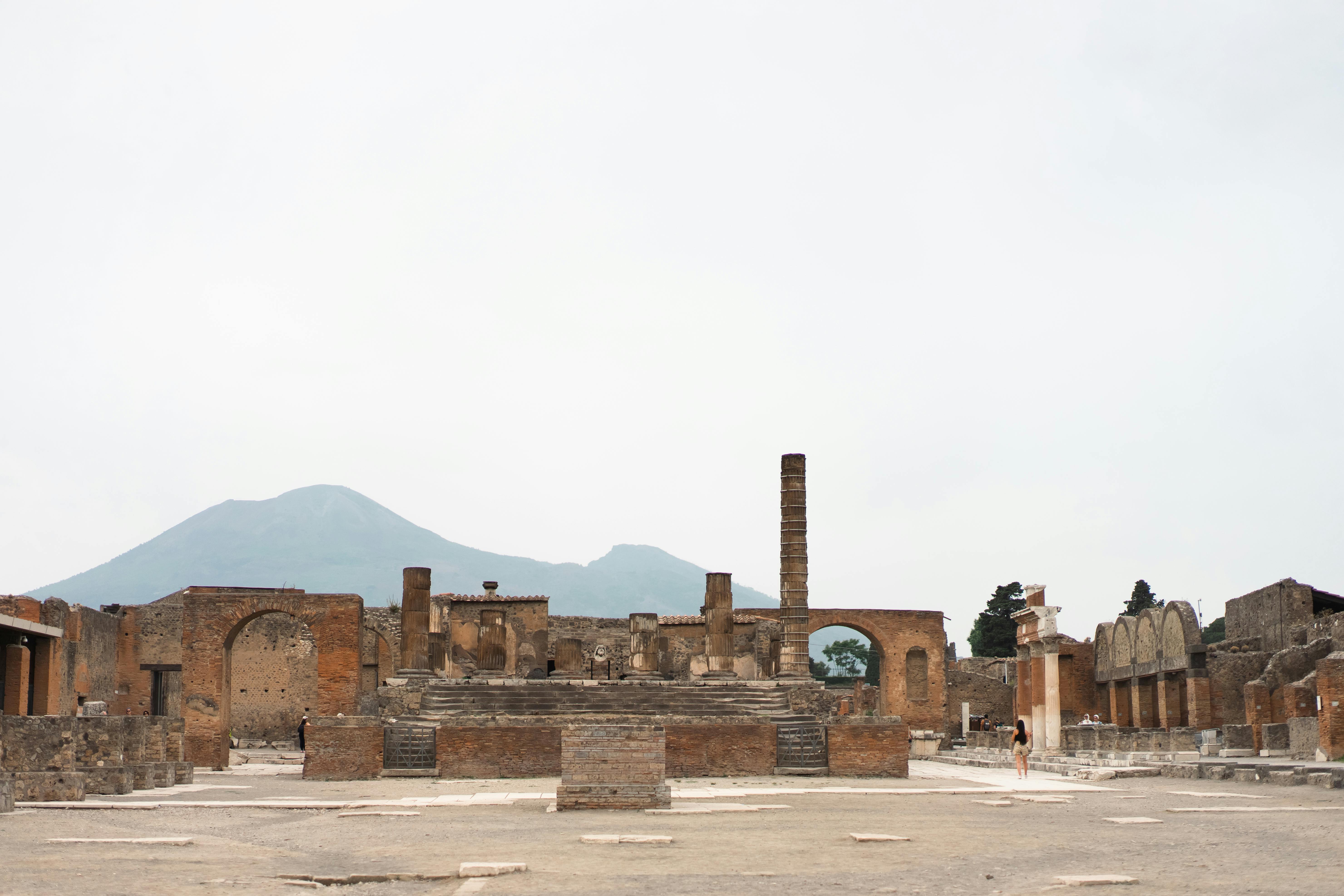
The Pompeii Amphitheater is one of the oldest and best-preserved in the world. Built around 80 B.C., this impressive structure could accommodate up to 20,000 spectators and was the venue for various events, such as gladiator fights, animal contests, and other popular competitions in ancient Rome. The amphitheater has a semicircular structure, allowing spectators to enjoy a clear view of the spectacle from any angle. Despite centuries of wear, many features of the amphitheater, such as its seating and arena, are still visible today, providing a unique experience of public life and entertainment in ancient Rome.
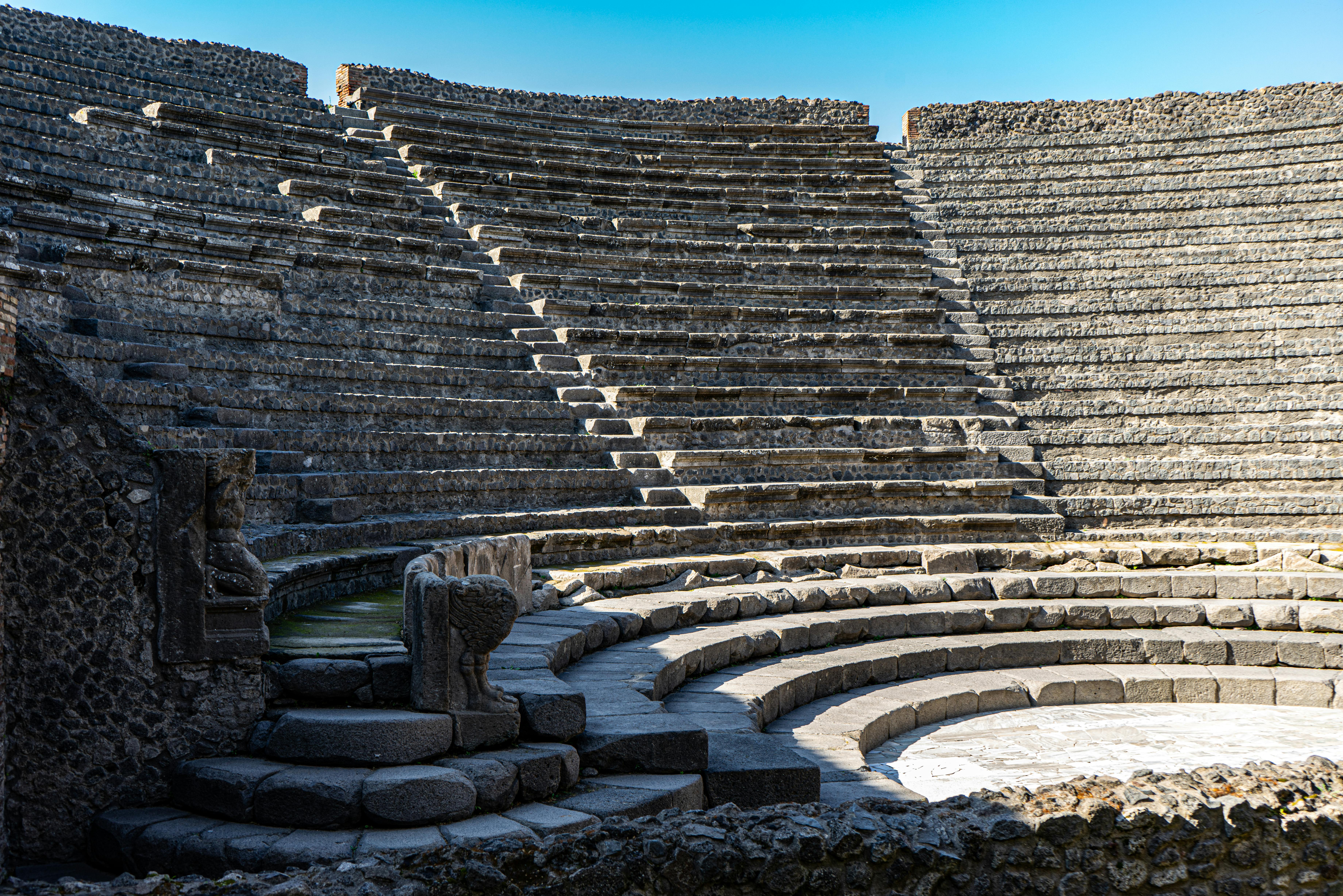
The House of the Faun is one of the most iconic residences in Pompeii, famous for its opulence and its notable mosaic of Alexander the Great. This luxurious house, which covers a large area, was one of the largest and best-preserved in the city. Its spacious courtyards, decorated with intricate mosaics, and its elegant frescoes showcase the lavish lifestyle of the Roman aristocracy. The Alexander the Great mosaic, found in the entrance hall, is one of the most famous and depicts a scene from the Battle of Issus, an important event in the life of the Macedonian conqueror. The House of the Faun is an excellent example of the rich domestic life in Pompeii and the artistic skill of the era.
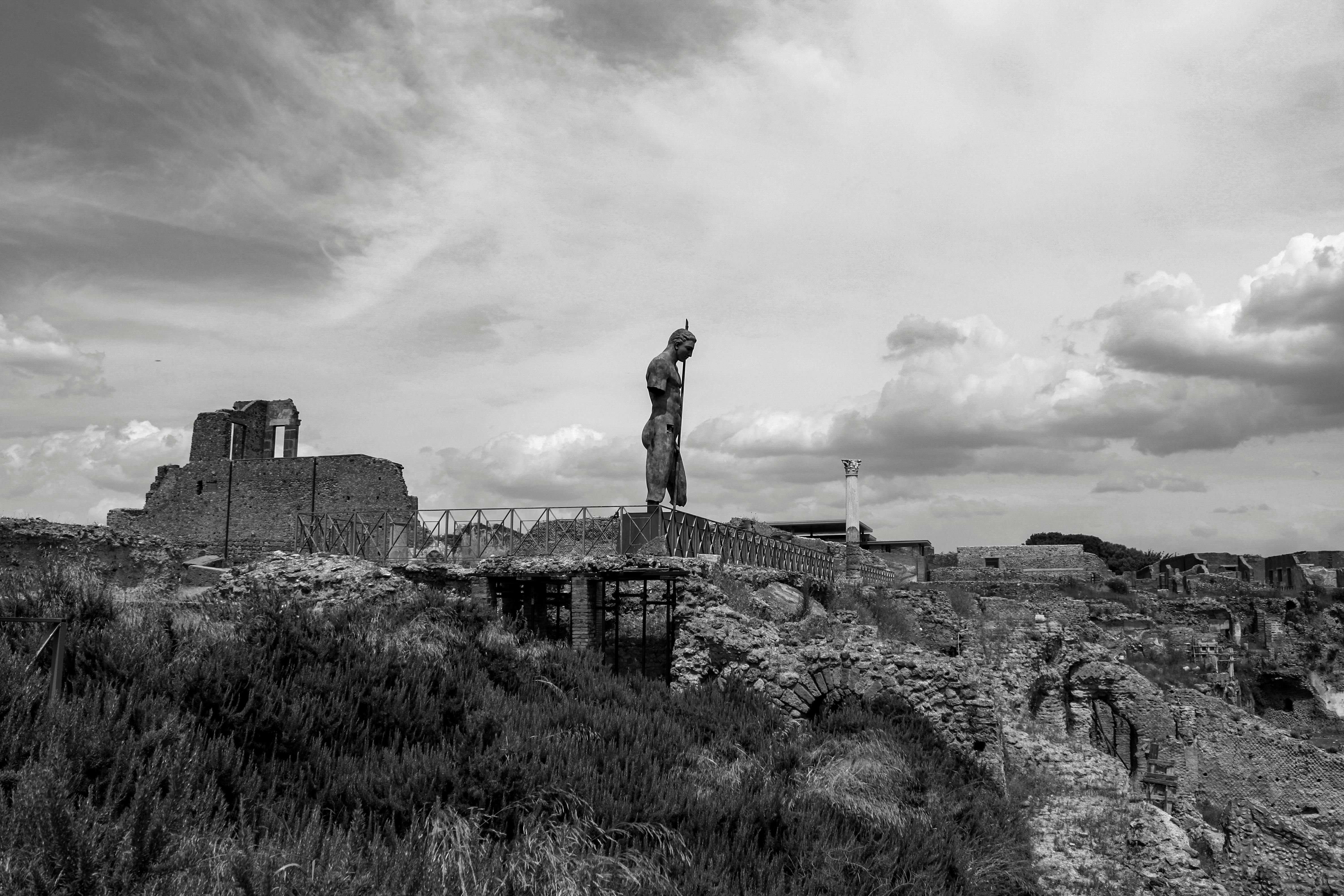
The Lupanar of Pompeii is the most famous brothel in the city and a place that offers an intriguing glimpse into everyday life in ancient Rome. This establishment, which functioned as a brothel, consists of a series of small rooms, each equipped with a stone bed and decorated with erotic frescoes depicting scenes of sexual life. These frescoes, which show human figures in various positions, are a testament to the culture and customs of the time. While the Lupanar was a place of entertainment, it also provides insight into the social differences and customs of ancient Pompeii. It is a fascinating place that invites reflection on private life and the norms of Roman society.
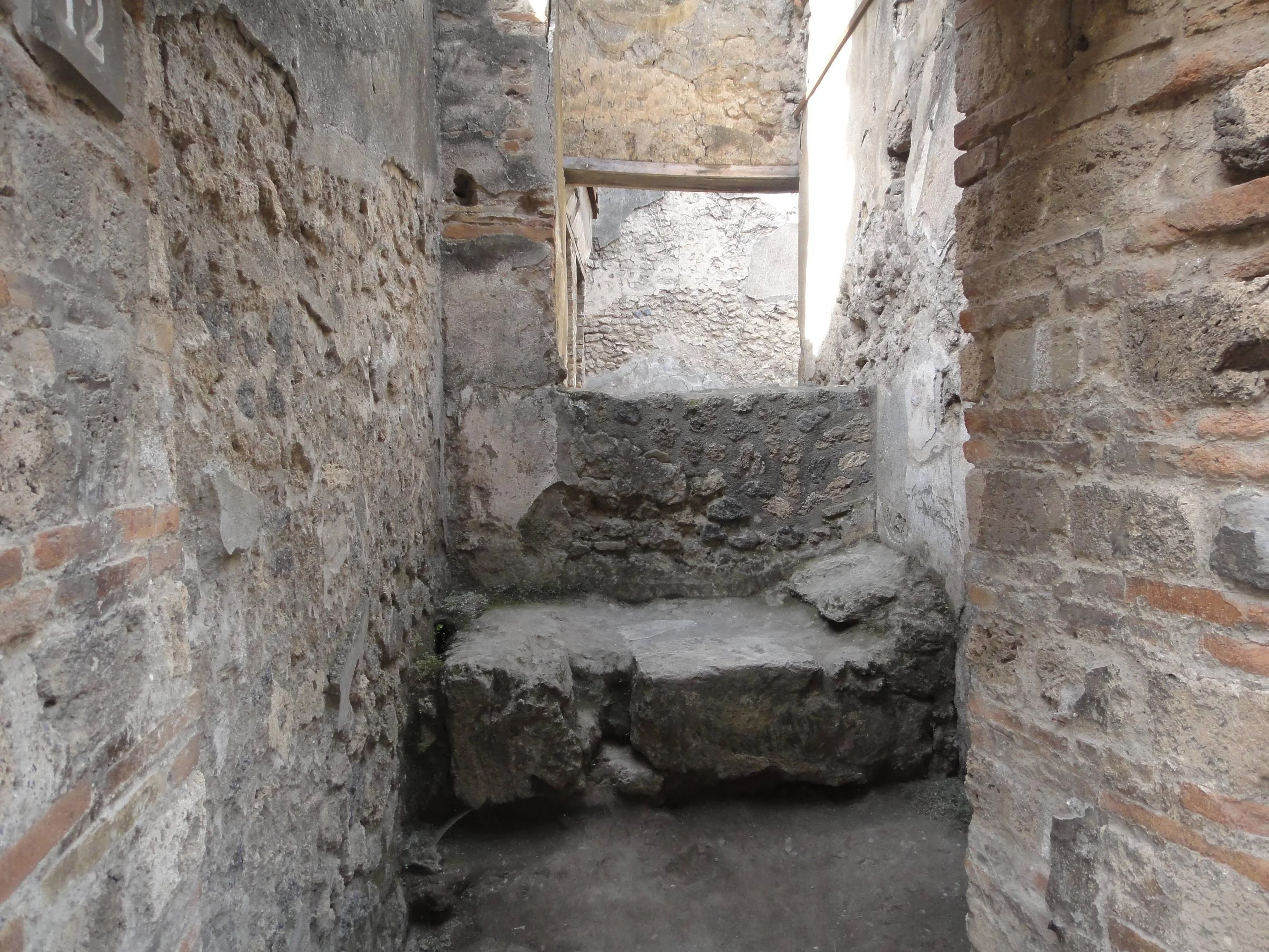
One of the most moving experiences in Pompeii is seeing the molds of the victims of the eruption of Mount Vesuvius. During excavations at the site, archaeologists discovered cavities in the debris where people had been trapped at the moment of the eruption. These spaces were filled with plaster, which allowed for the creation of detailed molds of the human figures as they remained at the time of their death. The facial expressions and postures of the victims reveal the anguish and tragedy of the moment, offering a deeply emotional view of the catastrophe that buried the city. The molds allow visitors to connect with the ancient inhabitants of Pompeii in a very personal way, showing the fragility of human life in the face of such a devastating natural disaster.
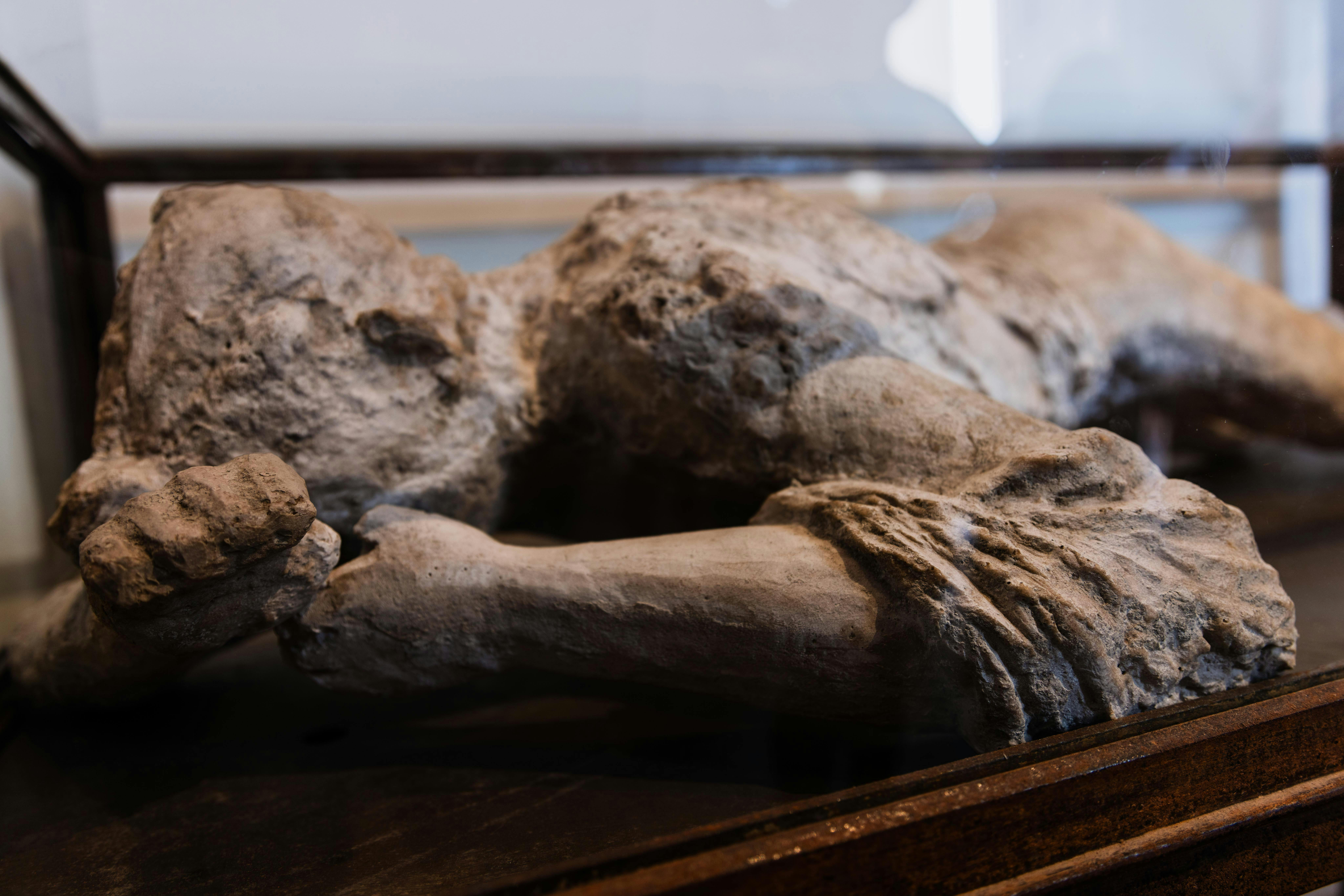
The Temple of Apollo is one of the oldest and most significant religious buildings in Pompeii. Dedicated to the god Apollo, one of the main deities in Roman religion, the temple was a place of worship and religious ceremonies. Its columns, though weathered, still stand proudly, and the sacred altar is visible in the center of the structure. The Temple of Apollo offers a striking view of Pompeii's landscape and is a place that invites reflection on the religious beliefs of the Romans and the role of the gods in their daily lives. It is one of the essential stops for anyone interested in the history of ancient Rome and the sacred sites of Pompeii.
